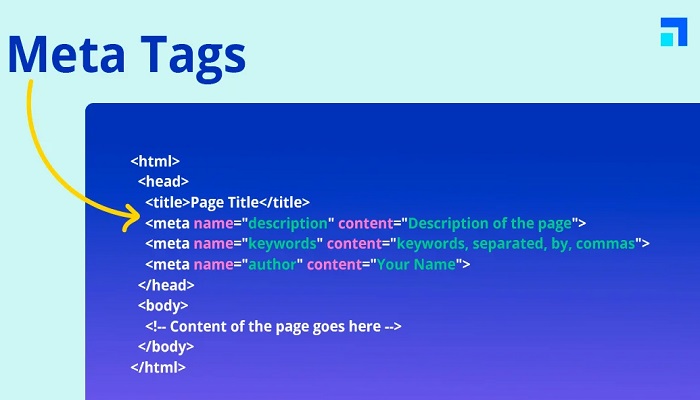Top SEO Audit Tools to Boost Your Website Traffic in 2025
As the digital landscape continues to evolve, the importance of search engine optimization (SEO) remains paramount for businesses seeking to enhance their online presence. In 2025, the competition for visibility on search engines is expected to intensify, making it crucial for website owners to conduct comprehensive SEO audits. These audits are essential for identifying areas of improvement and ensuring that websites are optimized to attract more traffic. To achieve this, leveraging the best SEO audit tools is indispensable.
One of the most effective tools for conducting an SEO audit is SEMrush. Known for its robust features, SEMrush provides a comprehensive analysis of a website’s performance. It offers insights into keyword rankings, backlink profiles, and on-page SEO issues. By using SEMrush, businesses can identify technical errors that may be hindering their website’s performance and take corrective measures to enhance their search engine rankings. Moreover, SEMrush’s user-friendly interface and detailed reports make it an invaluable tool for both beginners and seasoned SEO professionals.
Transitioning to another powerful tool, Ahrefs is renowned for its extensive backlink analysis capabilities. In 2025, backlinks will continue to play a critical role in determining a website’s authority and ranking on search engines. Ahrefs allows users to explore their backlink profile, identify toxic links, and discover new link-building opportunities. Additionally, its site audit feature provides a comprehensive overview of technical SEO issues, enabling website owners to address problems that could negatively impact their search visibility. With its vast database and precise data, Ahrefs is a must-have tool for any SEO audit.
In addition to SEMrush and Ahrefs, Moz Pro is another tool that deserves attention. Moz Pro offers a suite of features designed to improve a website’s SEO performance. Its keyword explorer tool helps users identify high-potential keywords, while the site crawl feature detects technical issues that could affect search engine rankings. Furthermore, Moz Pro’s page optimization suggestions guide users in making data-driven decisions to enhance their on-page SEO. As search algorithms become more sophisticated, Moz Pro’s ability to provide actionable insights will be invaluable for businesses aiming to stay ahead of the competition.
While these tools are instrumental in conducting SEO audits, it is also important to consider Google Search Console. As a free tool provided by Google, it offers direct insights into how the search engine views a website. Google Search Console provides data on search traffic, indexing status, and potential issues that may affect a site’s visibility. By regularly monitoring this tool, website owners can ensure that their site is optimized according to Google’s guidelines, thereby improving their chances of ranking higher in search results.
In conclusion, conducting an SEO audit is a critical step for businesses aiming to increase their website traffic in 2025. By utilizing tools such as SEMrush, Ahrefs, Moz Pro, and Google Search Console, website owners can gain valuable insights into their site’s performance and identify areas for improvement. These tools not only help in diagnosing technical issues but also provide strategic recommendations to enhance a website’s SEO. As the digital landscape becomes increasingly competitive, leveraging these top SEO audit tools will be essential for businesses seeking to boost their online visibility and attract more traffic.
Essential SEO Audit Checklist for Maximizing Traffic in 2025
In the ever-evolving digital landscape, staying ahead of the competition requires a keen understanding of search engine optimization (SEO) and its best practices. As we approach 2025, conducting a comprehensive SEO audit is essential for maximizing website traffic and ensuring your online presence remains robust. An effective SEO audit involves a meticulous examination of various elements that contribute to your website’s search engine ranking. By systematically addressing these components, you can enhance your site’s visibility and attract more visitors.
To begin with, a thorough analysis of your website’s technical SEO is crucial. This involves evaluating the site’s architecture, ensuring that it is both user-friendly and search engine-friendly. A well-structured website facilitates easy navigation, which in turn improves user experience and reduces bounce rates. Additionally, it is important to verify that your site is mobile-responsive, as an increasing number of users access the internet via mobile devices. Search engines prioritize mobile-friendly websites, making this an indispensable aspect of your audit.
Transitioning to on-page SEO, it is vital to assess the quality and relevance of your content. High-quality content that addresses the needs and queries of your target audience is more likely to rank well in search engine results. This includes optimizing title tags, meta descriptions, and headers with relevant keywords, ensuring they accurately reflect the content of each page. Furthermore, incorporating multimedia elements such as images and videos can enhance user engagement, but it is essential to optimize these elements by using descriptive file names and alt text to improve search engine indexing.
Another critical component of an SEO audit is evaluating your website’s backlink profile. Backlinks from reputable and authoritative sites signal to search engines that your content is valuable and trustworthy. Therefore, it is important to identify and disavow any low-quality or spammy backlinks that could harm your site’s reputation. Building a robust backlink strategy involves reaching out to industry influencers, guest blogging, and creating shareable content that naturally attracts links.
In addition to these elements, it is imperative to analyze your website’s loading speed. A slow-loading site can deter users and negatively impact your search engine ranking. Tools such as Google PageSpeed Insights can help identify areas for improvement, such as optimizing images, leveraging browser caching, and minimizing JavaScript. By enhancing your site’s performance, you can provide a seamless user experience that encourages visitors to stay longer and explore more pages.
Moreover, understanding user behavior through analytics is a valuable aspect of an SEO audit. By examining metrics such as bounce rate, average session duration, and conversion rates, you can gain insights into how users interact with your site. This data can inform decisions on content updates, design changes, and marketing strategies to better meet the needs of your audience.
Finally, keeping abreast of the latest SEO trends and algorithm updates is essential for maintaining a competitive edge. Search engines continually refine their algorithms to deliver more relevant results, and staying informed allows you to adapt your strategies accordingly. Engaging with SEO communities, attending webinars, and following industry leaders can provide valuable insights into emerging trends and best practices.
In conclusion, a comprehensive SEO audit is a multifaceted process that requires attention to technical, on-page, and off-page elements. By systematically addressing these areas and staying informed about industry developments, you can optimize your website for increased traffic and sustained success in 2025 and beyond.
How to Conduct a Comprehensive SEO Audit for Increased Traffic in 2025
In the ever-evolving digital landscape, conducting a comprehensive SEO audit is crucial for businesses aiming to increase their online visibility and drive more traffic to their websites in 2025. As search engines continue to refine their algorithms, staying ahead of the curve requires a meticulous approach to SEO. An effective audit not only identifies areas for improvement but also provides actionable insights to enhance a website’s performance. To begin with, it is essential to assess the technical aspects of your website. This involves ensuring that your site is mobile-friendly, as mobile-first indexing remains a priority for search engines. Additionally, page speed is a critical factor; slow-loading pages can deter users and negatively impact search rankings. Utilizing tools like Google PageSpeed Insights can help identify and rectify issues that may be hindering your site’s performance.
Transitioning from technical elements, the next step is to evaluate on-page SEO factors. This includes optimizing title tags, meta descriptions, and header tags to ensure they are relevant and keyword-rich. Moreover, content quality cannot be overstated. In 2025, search engines will continue to prioritize content that is not only original and informative but also engaging and tailored to the user’s intent. Therefore, conducting a content audit to identify gaps and opportunities for improvement is vital. This may involve updating outdated information, enhancing readability, and incorporating multimedia elements to enrich the user experience.
Furthermore, the importance of keyword analysis remains paramount. It is crucial to conduct thorough keyword research to identify terms and phrases that potential customers are using to find products or services similar to yours. By strategically incorporating these keywords into your content, you can improve your site’s relevance and visibility. However, it is important to avoid keyword stuffing, as search engines penalize this practice. Instead, focus on natural integration that enhances the overall quality of the content.
In addition to on-page factors, off-page SEO elements play a significant role in driving traffic. Building a robust backlink profile is essential, as high-quality backlinks from reputable sources signal to search engines that your site is authoritative and trustworthy. Engaging in outreach efforts to secure guest posts or collaborations can be an effective strategy to acquire valuable backlinks. Moreover, social media presence should not be overlooked, as it can amplify your content’s reach and drive referral traffic to your site.
As the audit progresses, it is also important to analyze user experience (UX) metrics. A seamless and intuitive user experience can significantly impact a site’s ability to retain visitors and convert them into customers. This involves assessing navigation, layout, and overall design to ensure that users can easily find the information they seek. Additionally, implementing structured data can enhance search visibility by enabling rich snippets, which provide users with more detailed information directly in search results.
Finally, it is imperative to continuously monitor and measure the impact of your SEO efforts. Utilizing analytics tools to track key performance indicators such as organic traffic, bounce rate, and conversion rates can provide valuable insights into the effectiveness of your strategies. By regularly reviewing these metrics, you can make informed decisions and adjust your approach as needed to achieve optimal results.
In conclusion, conducting a comprehensive SEO audit in 2025 requires a holistic approach that encompasses technical, on-page, and off-page elements. By systematically evaluating and optimizing these areas, businesses can enhance their online presence, attract more traffic, and ultimately achieve their digital marketing goals.


